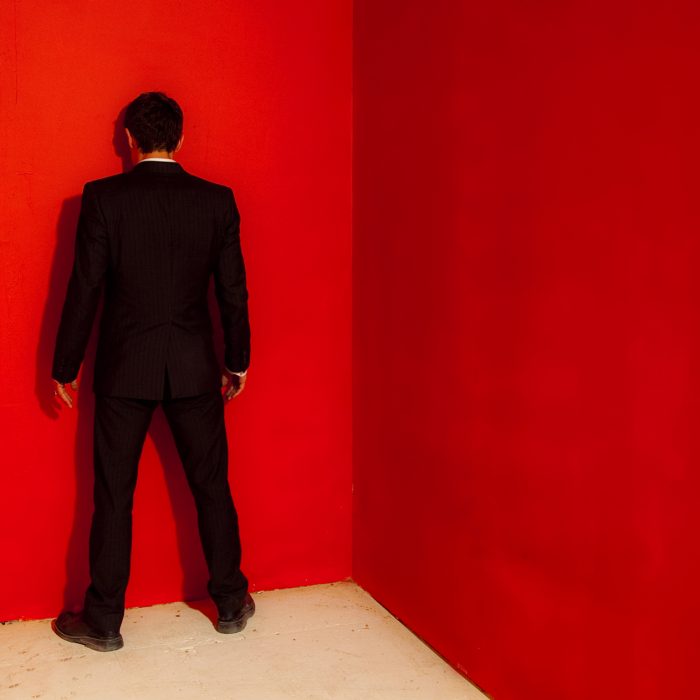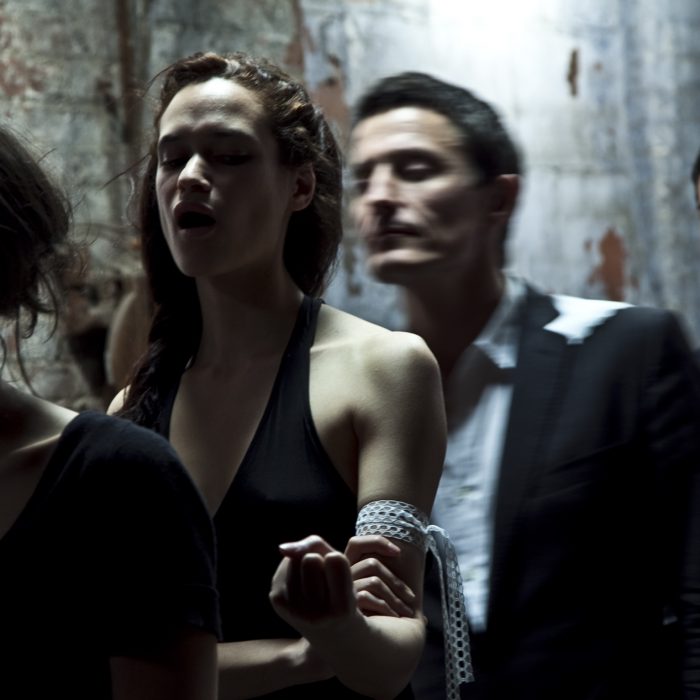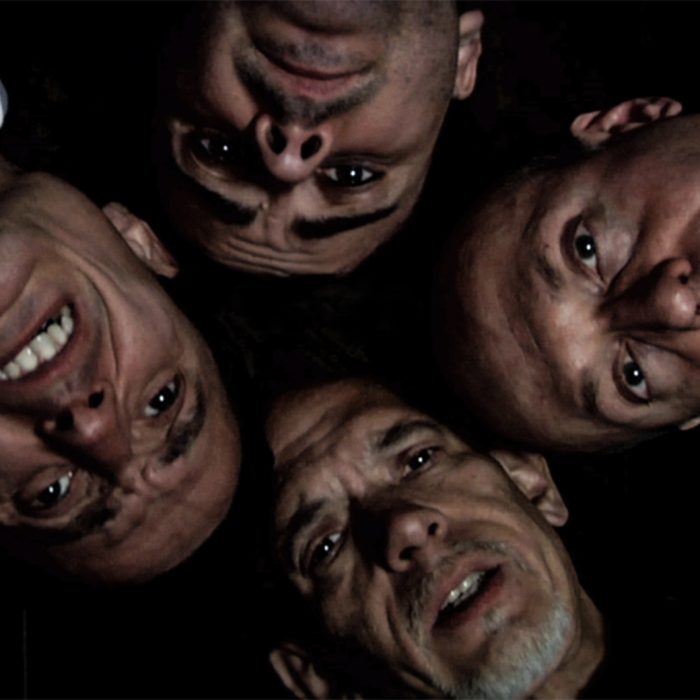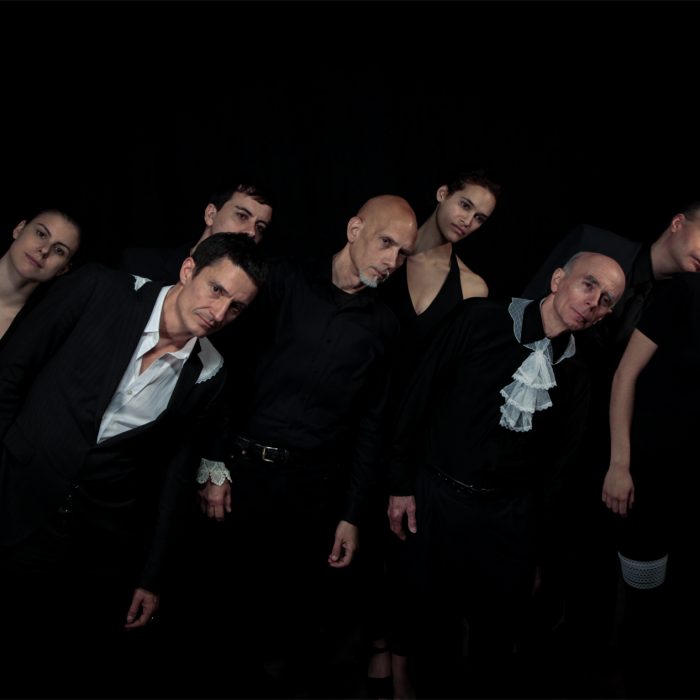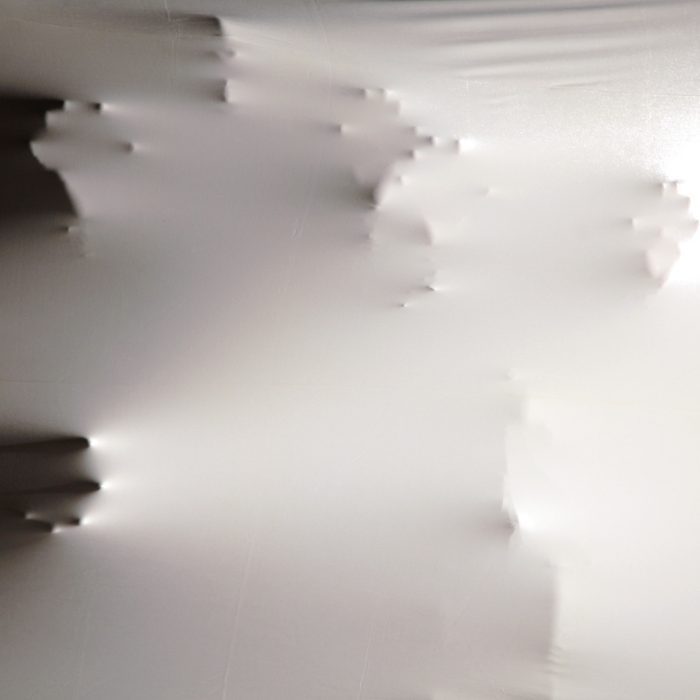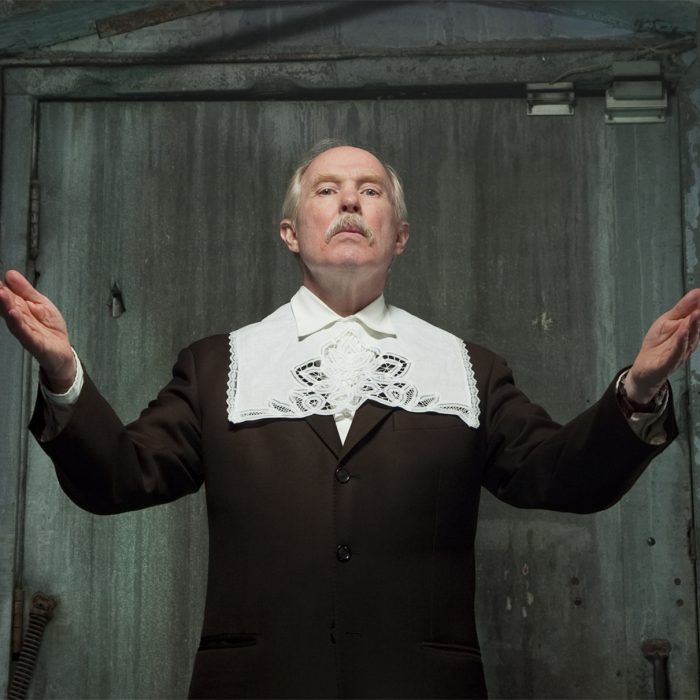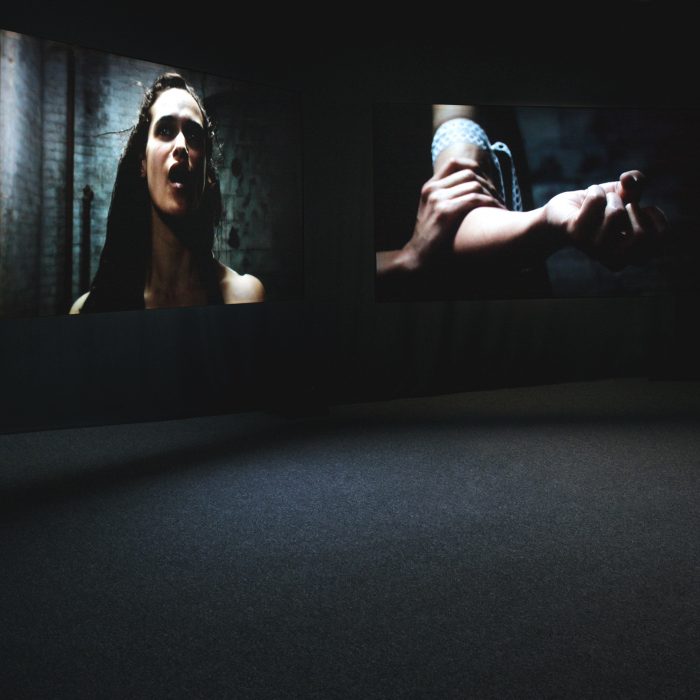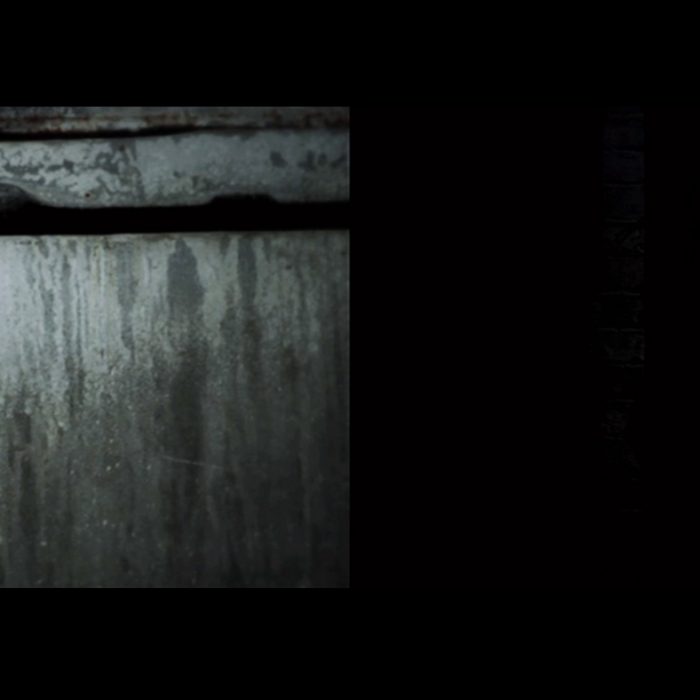The three scenarios in MEN DIE AND THEY ARE NOT HAPPY focus on three aspects of the state: The LAW, The LEADER and the PEOPLE. Each of the three scenes deals with: subconscious pathology, political/religious rhetoric and an abstract life and death scenario, respectively. Each scene is bookended by a Dance of Violence—an actor battling an invisible force in a red room. The silent narrator, also a dancer, carries the action from the dance into the next scene.
The first scene, The LAW, displays ten people standing in line in a judgment-day scenario. Each of them exhibits an exaggerated nervous behavior, which points to their personal subconscious pathology. The Law’s representative—a female guard—stands at the door. Her presence is forceful yet still, except for one dramatic look at The PEOPLE as they churn, mumble and click like a machine.
The second scene depicts a political/religious LEADER delivering a persuasive speech that spans various manipulative techniques. His rhetoric is delivered in Urdek—the language of despair, which is a language I composed from riffs on German and the Berber dialect of Moroccan Arabic.
The third scene depicts the PEOPLE in an abstract death and rebirth scenario. The oldest of the ten characters is born and the first reality he faces is that of couples bandaged together, struggling to move.
The title for the piece is taken from the play Caligula, written by Albert Camus in 1939. As a result of the death of his sister and mistress, Caligula goes on a journey seeking the impossible. He returns disillusioned and filled with rage—his realization emptied him of the will to exist. He unleashes destruction on his surroundings, as a way to secure his own.
In making the piece, I considered the intensity created in Dostoevsky’s Brothers Karamzov. This intensity is the result of two formal treatments—the protagonists consistently inhabit constrained spaces, and time is also constrained by compression in the book.

